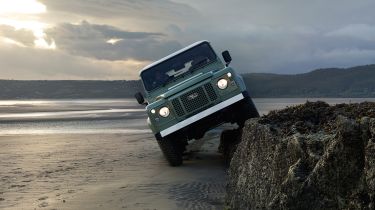Land Rover Defender SUV (1983-2016) - Practicality & boot space
There’s less interior space than you’d think, but the Land Rover Defender is available in a wide variety of body shapes
Along with being a tough and dependable 4x4, the Defender was always intended to be a practical workhorse. And although there isn’t quite as much space inside as you’d expect with such a large car, the Defender’s variety of body sizes and designs means there should be a version to suit most needs.
Land Rover Defender interior space and storage
The Defender is a bit deceptive, as it’s smaller inside than you’d expect such a large vehicle to be. Its tall shape and extensive ground clearance means you have to make a concerted effort to climb in, too.
Ergonomics aren’t great. The seats and steering wheel are mounted very close to the doors, so you have no choice but to open the window and stick your elbow out in order to sit comfortably. There’s no adjustment in the steering wheel and next to none in the driver’s seat, so getting comfortable in a Defender is tough, unless it just happens to fit your frame perfectly.
One of the Defender’s party tricks is that the materials used to line the interior are washable, so you can technically just hose it down if it gets too muddy. The cabin is incredibly tough and durable and there are even a couple of decent cup-holders between the front seats, as well as an open shelf on the passenger side of the dashboard to store your odds and ends.
Another plus point is that the Defender was available with seven seats – although there are no ISOFIX points for fitting child seats.
Boot space
The huge number of Defender configurations means it’s hard to nail down a definitive boot volume figure. The available body shapes include a van, a ‘station wagon’ estate and a five-seat double-cab pickup. The pickup is also offered with a high-capacity load bay. Land Rover can advise you on which option is the best, depending on the type of load you regularly carry or the job you want your Defender to do.












